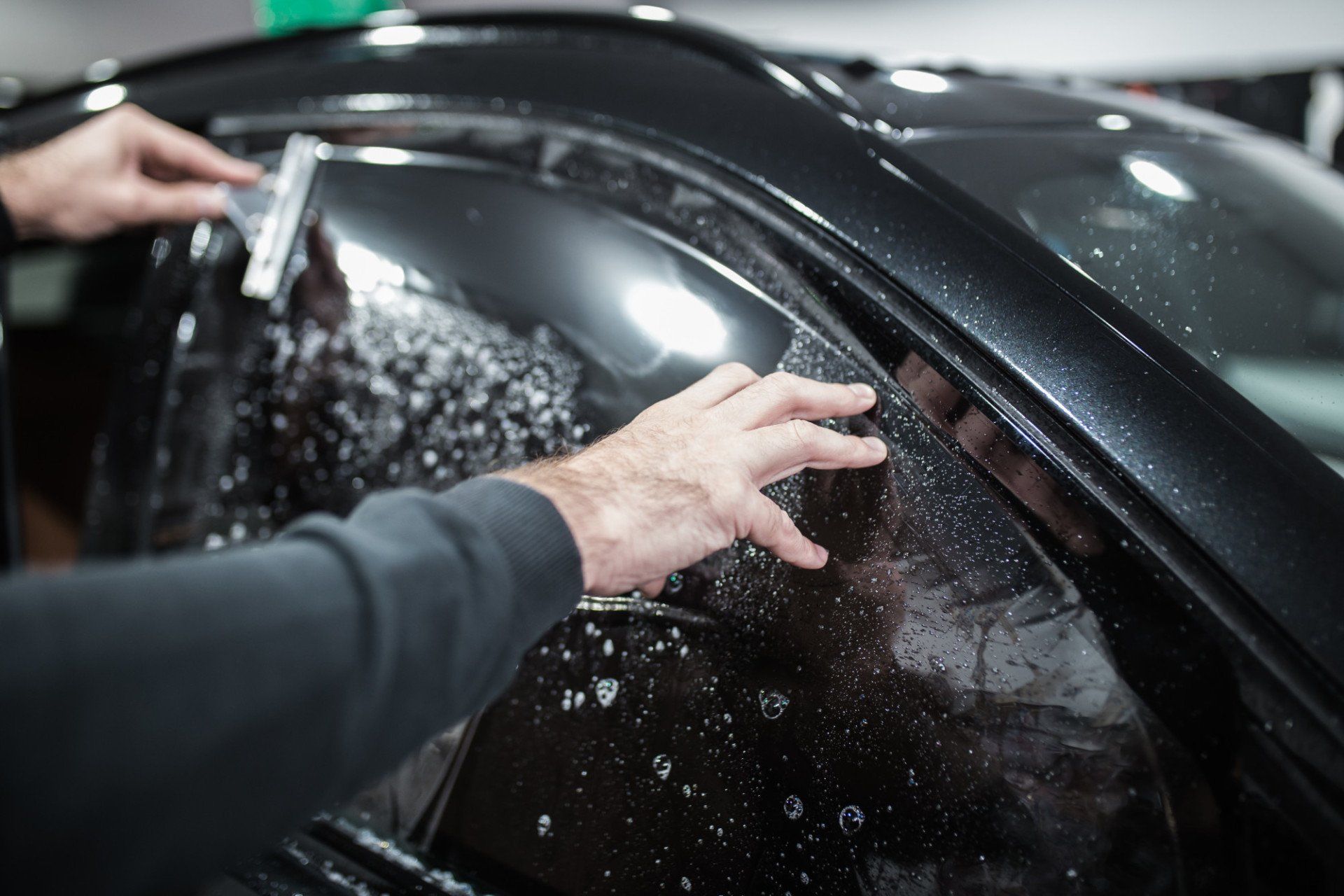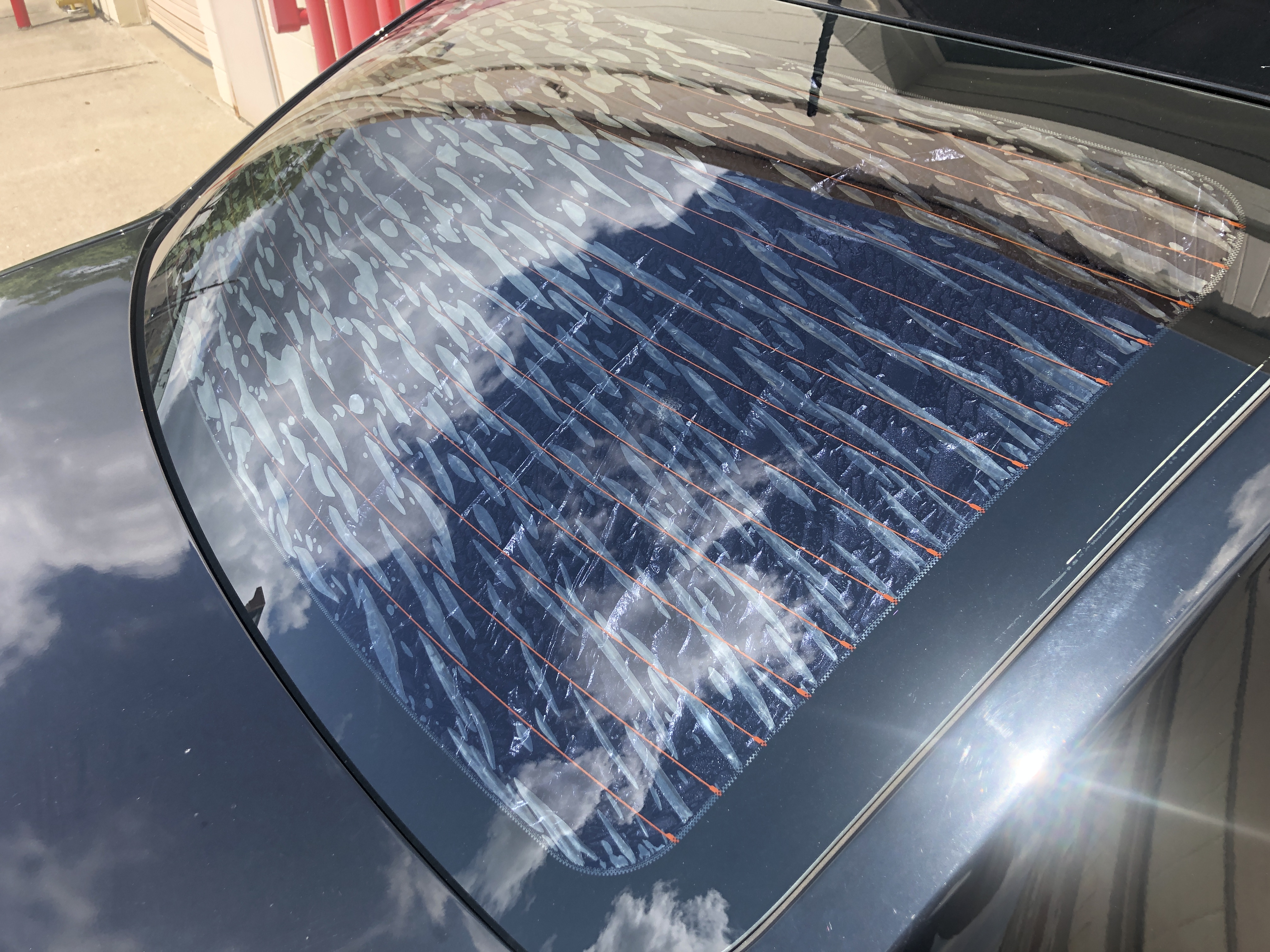Everything You Need to Understand About Car Window Tinting for Your Car
Auto window tinting is a functional enhancement for lots of vehicle owners. It supplies advantages such as enhanced convenience and power effectiveness. Numerous color films cater to different needs and preferences. Recognizing lawful regulations and selecting the ideal color percent is essential. The setup process and correct upkeep also play considerable duties in guaranteeing the durability of the color. What other aspects should one think about prior to making a decision on home window tinting?
Benefits of Vehicle Window Tinting
Although some vehicle owners might neglect it, vehicle home window tinting deals various benefits that improve both the driving experience and the lorry's long life. One of the main benefits is the decrease of heat accumulation inside the automobile, permitting an extra comfortable trip, especially throughout warm climate. This can cause reduced reliance on air conditioning, improving fuel efficiency.Additionally, home window tinting gives security versus harmful UV rays, which can cause skin damages and discolor indoor products in time. By obstructing these rays, the tint assists protect the automobile's inside and keep its resale value.Moreover, colored windows can improve privacy and safety, as they make it extra hard for outsiders to see inside the vehicle. This added layer of security can prevent prospective burglary. On the whole, car window tinting works as a useful financial investment that adds to both comfort and the lorry's overall wellness.
Types of Home Window Color Films
When taking into consideration automobile home window tinting, automobile owners come across a selection of home window color movies, each created to fulfill certain needs and choices. The initial group is dyed home window film, which gives a fundamental degree of personal privacy and UV protection while being cost-efficient. Next off, metalized films incorporate tiny metal bits, mirroring heat and boosting toughness, although they might disrupt digital signals.Ceramic films are one more option, understood for their superior warm being rejected and quality, supplying high efficiency without signal disturbance. Crossbreed movies incorporate attributes of dyed and metalized films, striking an equilibrium in between price and capability. Each kind of window color movie offers distinct benefits, enabling car owners to choose based upon their certain needs, such as warm appearance, control, and spending plan considerations. Recognizing these alternatives is vital for making an educated choice regarding vehicle home window tinting.
Recognizing Legal Rules
When thinking about auto home window tinting, it is crucial to recognize the lawful regulations that control tint darkness restrictions and windshield tint requirements. These laws can differ considerably from one state to another, impacting what is allowable for vehicle owners. Familiarizing oneself with these regulations warranties compliance and helps stay clear of potential fines or penalties.
Color Darkness Limitations
Just how can automobile proprietors ensure they stay certified with local legislations relating to window tinting? Comprehending tint darkness limits is crucial. Each state has details laws that dictate the allowable levels of darkness for window tints, which are determined by Visible Light Transmission (VLT) percents. Typically, front-side home windows need to allow a higher portion of light contrasted to rear home windows. For example, some states may enable only 30% VLT for front windows, while the rear windows may be allowed to have especially darker tints. To assure compliance, automobile proprietors must get in touch with state guidelines or local regulation enforcement for exact information. Furthermore, accredited tinting professionals can offer understandings about lawful limitations, ensuring that automobile owners make informed decisions.
Windscreen Color Rules

State-Specific Legislations
Steering through the landscape of state-specific regulations pertaining to auto window tinting calls for mindful focus to information, as regulations can differ considerably from one state to an additional. Each state has its own collection of regulations controling allowable color percentages, types of materials, and placement on lorry home windows. For example, some states permit darker colors on back home windows while banning them on front home windows, while others have stricter total limitations. In addition, certain states mandate making use of certain materials or require accreditation from installers. Failing to abide by these policies can result in fines or the requirement to get rid of non-compliant color. Lorry proprietors need to consult their state's Division of Motor Vehicles or appropriate authority to guarantee adherence to local regulations.
Choosing the Right Tint Portion
When choosing the ideal tint percentage for an automobile's home windows, one need to consider different aspects that influence both visual appeals and performance. Tint portions commonly range from 5% to 70%, with lower portions supplying darker shades and higher percents enabling extra light in. A darker color can improve personal privacy and lower glow, while a lighter color can maintain exposure and comply with legal restrictions.Furthermore, individual preference plays a substantial function in this decision. Some individuals might like the smooth look of darker colors, while others may favor a much more open, airy feeling. Additionally, the car's purpose ought to be considered; for circumstances, those utilizing their vehicles for business functions may decide for lighter colors to keep an expert look.Ultimately, the appropriate tint percentage balances individual style, convenience, and adherence to regional policies, ensuring an enjoyable tinting experience.
The Installation Process
A successful installment of window tint calls for mindful interest to detail and the right tools. The procedure typically begins with thorough cleansing of the windows to eliminate debris, dust, and dust, assuring proper attachment of the movie. Once the surfaces are prepared, the installer actions and reduces the tint film to fit each window accurately.Next, the movie is positioned on the glass, commonly utilizing a solution to promote easy modification and protect against air bubbles. Warmth is occasionally put on the movie to adapt it to the window's curves, boosting its look and long life. After validating a smooth fit, the installer thoroughly trims any excess film along the edges.Finally, the installer look for flaws and verifies all edges are safe and secure. This thorough method is vital not only for visual appeals but additionally for attaining the wanted efficiency benefits of window tinting, such as UV security and warmth reduction.
Maintenance and Take Care Of Tinted Windows
Proper maintenance and care are crucial for maintaining the honesty of tinted home windows. Reliable cleaning methods, the avoidance of unsafe chemicals, and regular inspections for damages play vital roles blog in making certain durability. By get redirected here complying with these guidelines, car proprietors can keep the visual and practical benefits of their window color.
Cleaning Strategies for Tint
Keeping the clearness and long life of colored windows calls for particular cleaning strategies customized to the movie's fragile surface area. It is important to use a soft microfiber cloth to avoid damaging the color while cleansing. A mild remedy of water and a few decreases of light recipe soap can efficiently get rid of dirt and crud. It is suggested to use the cleansing solution to the fabric, instead of directly onto the tinted surface, to protect against moisture from permeating into the sides of the movie. Mild, round movements should be utilized to clean the home windows extensively. Normal cleaning aids preserve presence and stops accumulation, guaranteeing that the color remains in prime condition with time. Complying with these methods will prolong the life of colored home windows.
Preventing Harmful Chemicals
Many home cleansing products are efficient on numerous surface areas, they can present significant threats to tinted windows. Chemicals such as ammonia, bleach, and certain solvents can weaken the color movie, resulting in discoloration and peeling. People need to go with pH-balanced cleaners especially created for tinted home windows. Furthermore, utilizing soft microfiber towels will help protect against scrapes and maintain the color's integrity. Regular upkeep is crucial; subsequently, preventing harsh scrubbing or abrasive materials is essential. It is advisable to review product labels meticulously to verify compatibility with home window colors. By choosing the best cleansing remedies and devices, vehicle proprietors can maintain the look and performance of their tinted windows, guaranteeing a much longer lifespan and optimal efficiency.
Examining for Damage
Normal inspections of colored windows are very important for recognizing any type of indicators of damages that may compromise their efficiency and look. Owners ought to look for bubbling, peeling off, or discoloration, as these concerns can show bad installation or exposure to harmful components. It is suggested to inspect the sides of the movie where peeling off may start and examine for any type of scrapes that could impact visibility. Furthermore, ultraviolet (UV) rays can cause the tint to weaken gradually, so checking its efficiency in blocking UV light is vital. If any type of damages is spotted, punctual activity must be taken, which may include professional repair or substitute. Keeping colored home windows not just boosts visual appeals yet also warranties continued defense for both passengers and the car interior.
Usual Myths Regarding Window Tinting
What mistaken beliefs border window tinting for vehicles? Many individuals think that all window colors are prohibited, find out here but guidelines differ by state, enabling for certain levels of tinting. One more usual myth is that darker colors block even more warmth; nevertheless, the performance of home window movies depends upon their modern technology instead of darkness. Some individuals additionally assume that window tinting is only for looks, neglecting its benefits, such as UV protection and glow reduction. Additionally, several presume that window tinting will harm their lorry's glass, however expertly applied colors can actually enhance glass sturdiness. There is an idea that window colors obstruct exposure, yet top quality movies are developed to keep clear sightlines while offering personal privacy. Understanding these misconceptions helps consumers make informed choices relating to home window tinting, ensuring they take pleasure in the full variety of advantages it provides.
Regularly Asked Questions
For How Long Does Window Tinting Typically Last?
The durability of window tinting varies based on aspects such as setup quality, movie type, and environmental conditions. Normally, top quality color can last anywhere from five to 10 years before calling for substitute or reapplication.
Can I Get Rid Of Window Tint Myself?
Removing home window color oneself is feasible, though it may be difficult. Individuals need to use a warm source and adhesive cleaner to reduce the procedure, but caution is suggested to stay clear of damaging the vehicle's glass or interior.
What Tools Are Needed for Do It Yourself Home Window Tinting?

Will Window Tinting Damages My Car's Glass?
Home window tinting, when applied correctly, generally does not harm an auto's glass. Nonetheless, incorrect installation or low-grade films may bring about peeling, gurgling, or scraping, potentially compromising the honesty of the glass in time.
Can Tinted Windows Affect My Car's Resale Worth?
The influence of tinted home windows on a vehicle's resale worth can vary. While some customers appreciate the added personal privacy and UV protection, others might view it as a possible issue, possibly influencing resale positively or adversely. When thinking about auto window tinting, lorry owners come across a variety of window color movies, each made to fulfill particular requirements and choices. When thinking about auto window tinting, it is crucial to comprehend the legal guidelines that govern tint darkness limitations and windshield color needs. Generally, front-side windows need to permit a greater percent of light contrasted to back home windows. Some states might permit just 30% VLT for front home windows, while the rear windows might be permitted to have significantly darker colors. Some states permit darker tints on rear home windows while prohibiting them on front windows, while others have stricter general limits.